Water vapor in the atmosphere. Water vapor in the air, despite the vast surfaces of oceans, seas, lakes and rivers, is far from always saturated. The movement of air masses leads to the fact that in some places on our planet at the moment, water evaporation prevails over condensation, while in others, on the contrary, condensation prevails. But in the air there is almost always a certain amount of water vapor.
The water vapor content in the air, i.e., its moisture content, can be characterized by several values.
The density of water vapor in the air is called absolute humidity. Absolute humidity is measured, therefore, in kilograms per cubic meter (kg / m 3).
The partial pressure of water vapor. Atmospheric air is a mixture of various gases and water vapor. Each of the gases contributes to the total pressure produced by the air on the bodies in it. The pressure that water vapor would produce if all other gases were absent is called partial pressure of water vapor. The partial pressure of water vapor is taken as one of the indicators of air humidity. It is expressed in units of pressure - pascals or millimeters of mercury.
Atmospheric pressure is determined by the sum of the partial pressures of the components of dry air (oxygen, nitrogen, etc.) and water vapor.
Relative humidity. By the partial pressure of water vapor and absolute humidity, one cannot yet judge how close water vapor is to saturation under given conditions. Namely, the intensity of water evaporation and the loss of moisture by living organisms depends on this. That’s why a value is introduced that shows how close the water vapor is to saturation at a given temperature, - relative humidity.
Relative humidity called the partial pressure ratio r water vapor contained in air at a given temperature to pressure r n.p. saturated steam at the same temperature, expressed as a percentage:
Relative humidity is usually less than 100%.
Psychrometer Humidity is measured using special instruments. We will talk about one of them - psychrometer.
The psychrometer consists of two thermometers ( fig. 11.4) The tank of one of them remains dry, and it shows the air temperature. The reservoir of the other is surrounded by a strip of fabric, the end of which is lowered into the water. Water evaporates, and thanks to this, the thermometer cools. The higher the relative humidity, the less intensive the evaporation and the temperature indicated by the thermometer surrounded by a damp cloth is closer to the temperature of the dry thermometer.
At relative humidityequal to 100%, the water will not evaporate at all and the readings of both thermometers will be the same. Using the temperature difference of these thermometers with the help of special tables, you can determine the air humidity.
Humidity value. The humidity determines the rate of evaporation of moisture from the surface of a person’s skin. And the evaporation of moisture is of great importance to maintain a constant body temperature. In spaceships, the relative humidity most favorable to humans is maintained (40-60%).
It is very important to know the humidity in meteorology - in connection with weather prediction. Although the relative amount of water vapor in the atmosphere is relatively small (about 1%), its role in atmospheric phenomena is significant. Condensation of water vapor leads to the formation of clouds and subsequent precipitation. In this case, a large amount of heat is released. Conversely, the evaporation of water is accompanied by the absorption of heat.
In weaving, confectionery and other industries, a certain humidity is necessary for the normal course of the process.
The storage of works of art and books requires maintaining air humidity at the required level. Therefore, in museums on the walls you can see psychrometers.
It is important to know not the absolute amount of water vapor in the atmosphere, but the relative. Relative humidity is measured with a psychrometer.
Made by:
Tinkov A.Yu.
Group 803001207
Checked: Alekhina T.N.
Rating: _______
Physics Lab Report
"Determination of air humidity by the psychrometric method"
Test questions:
1) What is absolute humidity air? In what units is it measured? What is relative humidity?
Absolute humidity - a value numerically equal to the mass of water vapor contained in a unit volume of air at a given temperature. It is usually measured in g / m 3.
Relative humidity(Definition 1) - a value characterizing the degree of saturation of air with water vapor. This is the ratio of the partial pressure of the vapor in the air at a given temperature to the pressure of the water vapor that would saturate the air at the same temperature.
Relative humidity(Definition 2) - the ratio of the amount of water vapor to the amount of water vapor that air may contain at a given temperature.
2) What are the methods for determining air humidity. Which one is more accurate?
There are several methods for determining the absolute and relative humidity. The instruments used to measure humidity include hygrometers and psychrometers.
In order to determine air humidity in a psychrometric way, the August psychrometer and the Assman psychrometer are more often used, the principle of which is the same.
3) The principle of operation of the Assman psychrometer.
The simplest psychrometer consists of two alcohol thermometers, one is an ordinary dry thermometer, and the second has a humidification device. Thermometers have a graduation with a graduation price of 0.1-0.5 degrees. The temperature sensor of the wet thermometer is wrapped in batiste, which is located in a vessel with water. Due to evaporation of moisture, the humidified thermometer cools. To determine the relative humidity, take readings from dry and wet thermometers, and then use the Psychrometric table. Typically, the input values \u200b\u200bin the Psychrometric table are the readings of a dry thermometer and the temperature difference between dry and wet thermometers. For ease of use, the design of the device may include a psychrometric table. A fan may also be turned on to aspirate air near a wet thermometer. At the same time, the aspiration rate is small, usually 0.5-1 m / s. The psychrometer readings are also influenced by atmospheric pressure, therefore, for accurate measurements, in the case of deviation of atmospheric pressure from the nominal, a correction is added to the results of the Psychrometric table.
4) What is the essence of the psychrometric method for determining air humidity.
It is based on measuring the temperature difference between dry and wet thermometers using August and Assman psychrometers. The Augustus psychrometer consists of two identical mercury thermometers with a fission price of 0, 2 C, fortified side by side. The mercury tank of one of them is tightly wrapped with a piece of batista or gauze, lowered into a vessel with clean water. Water evaporates from the surface of the fabric the easier, the less moisture in the air. By the difference in the readings of the two thermometers, the relative humidity is found using the psychrometric tables attached to the device.
5) What is the dew point?
The gas dew point temperature (dew point) is the value of the gas temperature below which the water vapor contained in the isobarically cooled gas becomes saturated above the flat surface of the water.
6) Name the formula (7) and determine the dimension of the constant of the psychrometer.
P \u003d P H - A (t - t 1) H
The dimension of the constant of the device used is found by the formula:
Working process:
Observing the rules indicated in the work, he wetted the cambric with water, which wrapped the can of one of the thermometers of the psychrometer. Turned on the fan. Following the readings of the wetted thermometer, I set the temperature t 1 (\u003d 16 ° C). Set the dry thermometer t (\u003d 24 ° C).
After calculating the temperature difference between the dry and wet thermometers (t - t 1) from the psychrometric table, I found the relative humidity:
Knowing the ambient temperature t (\u003d 24 ° C), I found the pressure value P 0 (\u003d 22.4) of saturated water vapor at this temperature according to the corresponding table, and using formula (2) I found the absolute air humidity:
P rel \u003d P 0 * r / 100 \u003d 9.4 mm.
The absolute humidity was determined by the formula (8):
P abs \u003d P n - 0.000662 (t - t 1) * H \u003d 9.6 mm Hg
Data table:
|
P rel (mm) |
N (mmHg) |
P abs (mm) |
||||
CONTENT: In the atmosphere, water is contained in gaseous (water vapor), droplet-liquid and solid (ice crystals) states. Humidity is one of the most significant characteristics of weather and climate. Humidity is of great importance in certain technological processes, in the treatment of a number of diseases, in the storage of works of art, books, etc.
In the atmosphere, water is contained in gaseous (water vapor), droplet-liquid and solid (ice crystals) states.
Humidity is one of the most significant characteristics of weather and climate. Humidity is of great importance in some technological processes, in the treatment of a number of diseases, in the storage of works of art, books, etc. Several concepts are used to characterize air humidity.
The partial pressure of water vapor (e, Pa or mmHg) is part of the total pressure created by water vapor.
Absolute humidity (a, g / m) - moisture content per unit volume of air.
If air contains the maximum amount of moisture that it can be at a given temperature, then the partial pressure of water vapor
The process of evaporation of moisture by plants is called transpiration.
it is equal to the pressure of saturated water vapor at a given temperature.
The pressure of saturated water vapor (E, mmHg) at a temperature (t, ° C) can be found by the formula:
log E \u003d 0.622 + 7.5t / (238 + t)
Relative humidity (f,%) - the ratio of the actual moisture content to the maximum possible at a given temperature.
Relative humidity can be calculated as the ratio of partial pressure to saturated vapor pressure at a given temperature:
Thus, relative humidity gives an idea of \u200b\u200bthe degree
saturation of air with water vapor.
The dew point (t, C) is the temperature to which air must be cooled so that the water vapor contained in it reaches a saturation state. Knowing the dew point and air temperature, you can determine the absolute and relative humidity.
Absolute humidity and partial pressure of water vapor characterize the water vapor content in the air (moisture content), and relative humidity and saturation deficit characterize the ratio between the actual moisture content of the air and the maximum possible (saturated state).
2. At a temperature of 25 ° C, the absolute humidity is 20 g / m3. Determine the relative humidity. The necessary reference materials can be found in the manual
log E \u003d 0.622 + 7.5t / (238 + t)
log E \u003d 0.622 + 7.5 * 25 / (238 + 25) \u003d 1.33
f \u003d (20 / 22.96) * 100% \u003d 87.1%
Answer: relative humidity is 87.1%
3. Air temperature 40 ° C, relative humidity 70%. Determine the water vapor content in the air (in g / m). The necessary reference materials can be found in the manual.
log E \u003d 0.622 + 7.5t / (238 + t)
e \u003d 50.25 * 0.7 \u003d 35.2g / m3
2. At a temperature of 40 ° C, the absolute humidity is 40 g / m 3. Determine the relative humidity. The necessary reference materials can be found in the manual.
log E \u003d 0.622 + 7.5t / (238 + t)
log E \u003d 0.622 + 7.5 * 40 / (238 + 40) \u003d 1.7
f \u003d (40 / 50.25) * 100% \u003d 79.6%
Answer: relative humidity is 79.6%
3. Air temperature 10 ° C, relative humidity 70%. Determine the water vapor content in the air (in g / m 3). The necessary reference materials can be found in the manual.
log E \u003d 0.622 + 7.5t / (238 + t)
log E \u003d 0.622 + 7.5 * 10 / (238 + 10) \u003d 1.7
Absolute and relative humidity
Absolute and relative humidity. Atmospheric air always contains some moisture in the form of vapors. Humidity in rooms with natural ventilation is determined by the release of moisture by people and plants during breathing, the evaporation of household moisture during cooking, washing and drying of linen, as well as process moisture (in production rooms) and the humidity of building envelopes (in the first year of operation of buildings).
The amount of moisture in grams contained in 1 m3 of air is called the absolute humidity f, g / m3. However, to calculate the diffusion of steam through the building envelope, the amount of water vapor should be estimated in units of pressure, which allows us to calculate the driving force of moisture transfer. For this purpose, a partial pressure of water vapor e, called the elasticity of water vapor and expressed in Pascals, is used in building thermal physics.
Partial pressure increases as absolute humidity rises. However, it, like absolute humidity, cannot increase indefinitely. At a certain temperature and barometric air pressure, there is a limit value of the absolute air humidity F, g / m3, which corresponds to the complete saturation of air with water vapor, beyond which it cannot increase. This absolute humidity corresponds to the maximum elasticity of water vapor.
E, Pa, also called saturated water vapor pressure. With increasing air temperature, E and F increase. Therefore, both e and f do not give an idea of \u200b\u200bthe degree of saturation of air with moisture unless temperature is indicated.
To express the degree of air saturation with moisture, the concept of relative air humidity j,% is introduced, which is the ratio of the partial pressure of water vapor e in the air medium to the maximum elasticity of water vapor E, corresponding to a medium temperature j \u003d (e / E) 100%.
Relative humidity is of great importance in evaluating it both hygienically and technically, j determines the rate of evaporation of moisture from moistened surfaces and in particular from the surface of the human body. A relative humidity of 30-60% is considered normal for a person. j determines the sorption process, i.e., the process of moisture absorption by capillary-porous materials in the air. Finally, the process of moisture condensation in the air (the formation of fogs) and on the surface of building envelopes depends on j.
If you increase the temperature of the air with a given moisture content, then the relative humidity will decrease, since the partial pressure of water vapor e remains constant, and the maximum elasticity E increases with increasing temperature.
With decreasing air temperature with a given moisture content, the relative humidity increases, since at a constant partial pressure of water vapor e, the maximum elasticity E decreases with decreasing temperature. In the process of lowering the air temperature at a certain value, the maximum elasticity of water vapor E turns out to be equal to the partial pressure of water vapor e. Then the relative humidity j will be 100% and the state of complete saturation of the cooled air with water vapor will come. This temperature is called the dew point temperature for a given air humidity.

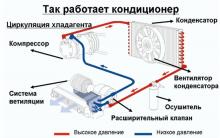
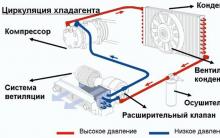
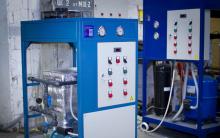
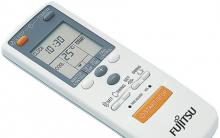

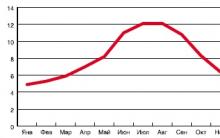




The best material for car trim
Principles of hardening the body
Do-it-yourself compressor - with minimal scrap costs
Which is better: do-it-yourself or factory-made compressor for painting a car
Causes of fuel pump malfunctions